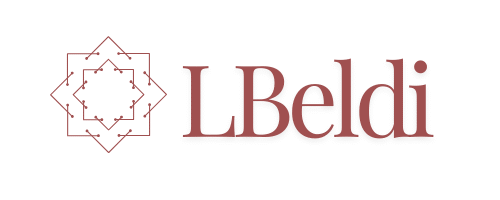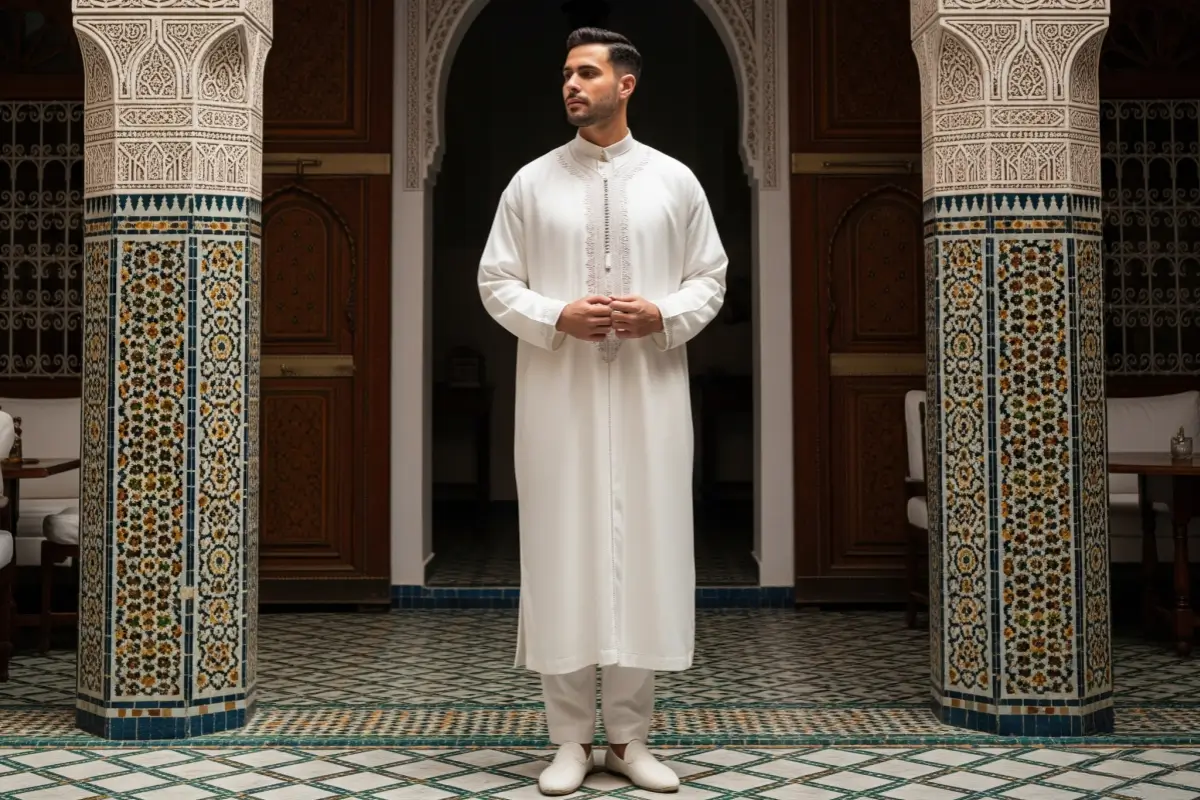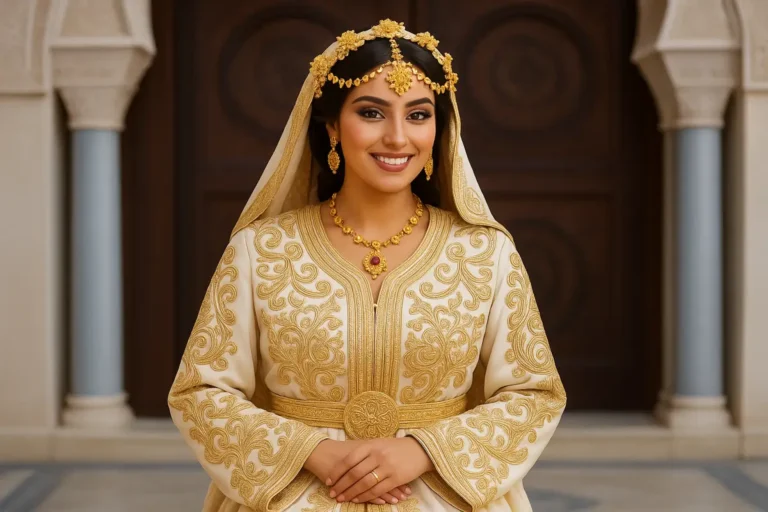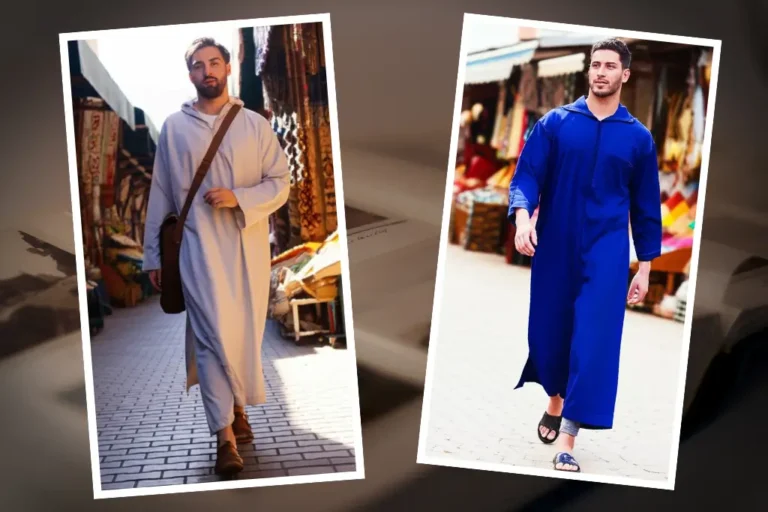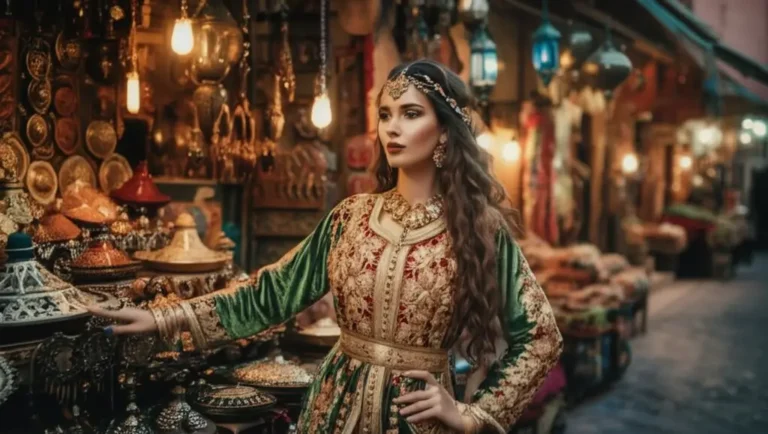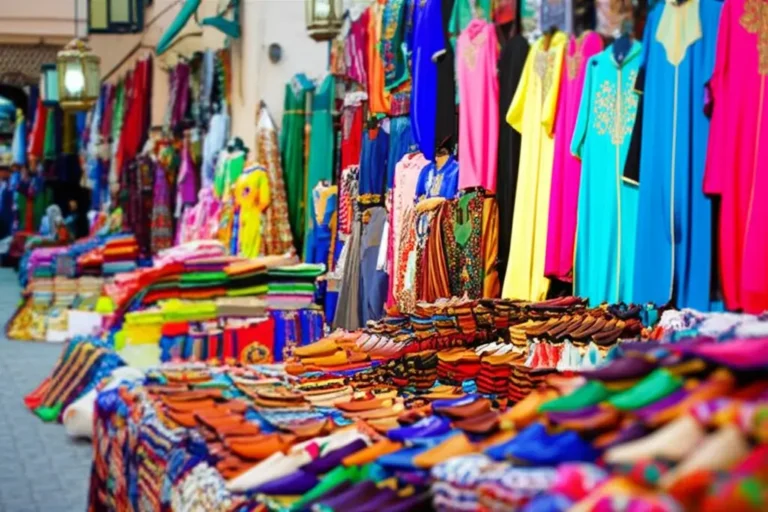Moroccan Jabador: The Elegant Fusion of Tradition and Modern Men’s Fashion
Table of Contents
Introduction
Step into a world where heritage meets contemporary flair, where every stitch tells a story, and elegance is woven into the very fabric of daily life. We’re talking about the Moroccan Jabador, a garment that stands as a testament to Morocco’s rich cultural tapestry and its enduring influence on men’s fashion. Far from being just a piece of clothing, the jabador is a symbol of identity, celebration, and refined taste. In this comprehensive guide, we’ll journey through its fascinating history, explore its intricate designs, and discover how this traditional attire has gracefully evolved to become a staple in modern men’s wardrobes, perfectly blending the old with the new.
The Roots of Elegance: A Glimpse into Jabador History
The story of the Moroccan Jabador is as rich and intricate as the embroidery that often adorns it. Its origins can be traced back centuries, evolving from practical attire to a symbol of status and cultural pride. Initially, the jabador was a two-piece set, typically consisting of loose-fitting trousers (serwal) and a tunic (bad’ia). These early forms were worn for comfort and modesty, reflecting the traditional Islamic values prevalent in Morocco.
Historical accounts, such as those from the 16th-century Arabist Luciano Rubio Calzón and the writings of Hassan al-Wazzan (Leo the African), suggest that the jabador, or its embryonic form, was worn by the elite of Moroccan society – nobles, merchants, and dignitaries. It was a garment that spoke of refinement and prosperity, often worn underneath more elaborate outer garments like the caftan or djellaba.
Over time, a matching jacket was added to the ensemble, completing what we recognize today as the traditional moroccan jabador two-piece set. This evolution didn’t just add a layer of clothing; it added a layer of sophistication and formality, making the jabador suitable for significant occasions.
Cultural Significance: More Than Just Fabric and Thread
The traditional jabador outfit is deeply embedded in Moroccan culture, serving as a powerful symbol of identity and heritage. It’s not merely clothing; it’s a narrative woven into fabric, representing centuries of tradition, artistry, and social customs. The jabador is a ubiquitous sight at celebrations, from joyous weddings and engagements to solemn baptisms and religious holidays like Eid.
At Moroccan weddings, for instance, the jabador plays a significant role, particularly for the groom and male attendees. It embodies the solemnity and festivity of the occasion, often adorned with exquisite jabador embroidery that signifies wealth and status. The tradition of Amaria bearers, who carry the bride in a ceremonial procession, also highlights the jabador’s importance, as they too don this traditional attire, preserving a custom that dates back to the 16th century.
Beyond formal events, the jabador represents a connection to ancestral roots and a commitment to preserving cultural identity in a rapidly modernizing world. It’s a living piece of history, worn with pride and reverence, bridging generations and maintaining the continuity of Moroccan traditions.
The Evolution of Style: From Tradition to Modernity
While the essence of the moroccan jabador remains rooted in tradition, it has not been immune to the winds of change. The 20th century marked a pivotal period for Moroccan fashion, with designers beginning to reinterpret traditional costumes, including the jabador, for a contemporary audience. This evolution, however, has been a delicate dance between innovation and preservation, ensuring that the garment’s traditional character is not lost.
Modern moroccan jabador for men often features updated silhouettes and fabrics. The traditional serwal qandrisi, once baggy and loose, has given way to more tailored, yet still comfortable, embroidered pants. The bad’ia, or tunic, might now be a three-quarter length Moroccan caftan, offering a more streamlined look. Even the transparent vest, a replica of the 16th-century Mansouria, has found its place in modern interpretations, adding a touch of contemporary elegance.
What truly sets the jabador apart, both historically and in its modern iterations, is the meticulous Moroccan embroidery. Techniques like SFIFA, Aakad, Dfira, and Kitane, passed down through fourteen centuries of craftsmanship, continue to adorn these garments. Originally made from fine wool (Mlifa), modern jabadors incorporate a wider range of luxurious fabrics, from silk and velvet to brocade, allowing for greater versatility and comfort.
This blend of traditional craftsmanship with modern design sensibilities has propelled the jabador beyond Morocco’s borders. It has gained international recognition as a symbol of sophisticated Moroccan men’s clothing, sought after by those who appreciate its unique blend of heritage and contemporary style. In 2019, traditional Moroccan garments, including the jabador, were among the most requested products abroad, a testament to their enduring appeal.
Modern Moroccan Jabador: Embracing Contemporary Elegance
Today, the moroccan jabador has gracefully transitioned from purely traditional attire to a versatile garment embraced by modern men for various occasions. It’s a testament to its timeless design and the adaptability of Moroccan fashion. Contemporary designers are constantly innovating, offering elegant jabador styles that cater to diverse tastes while preserving the garment’s authentic charm.
Key Features of Modern Jabador Styles:
•Fabric Variety: While traditional jabadors favored wool and cotton, modern versions often feature luxurious silks, breathable linens, soft velvets, and even lightweight synthetic blends, offering comfort and versatility for different climates and events.
•Color Palettes: Beyond the classic earth tones, modern jabadors come in a vibrant spectrum of colors, from deep jewel tones like emerald green and sapphire blue to subtle pastels and sophisticated neutrals. This allows for greater personal expression and coordination with other wardrobe elements.
•Embroidery Evolution: The intricate jabador embroidery remains a hallmark, but its application has evolved. While traditional patterns are still cherished, contemporary designs might feature minimalist embroidery, geometric motifs, or even subtle metallic accents, offering a fresh take on classic artistry.
•Fit and Silhouette: Modern jabadors often feature a more tailored fit, providing a sharper silhouette without sacrificing comfort. The tunics can range from mid-thigh to knee-length, and the pants, while still loose, are often more streamlined than their historical counterparts.
•Two-Piece Versatility: The moroccan jabador two-piece set offers incredible versatility. The tunic and pants can be worn together for a complete traditional look, or individual pieces can be paired with Western attire for a fusion style. For example, a jabador tunic can be worn over jeans or tailored trousers for a smart-casual ensemble.
The Jabador for Special Occasions: A Statement of Sophistication
For significant life events, the moroccan wedding attire for men often features the jabador as a centerpiece. Grooms and wedding guests alike choose jabadors that exude grandeur and elegance. These special occasion jabadors are typically crafted from the finest fabrics, adorned with elaborate hand-embroidery, and sometimes embellished with precious stones or metallic threads.
Imagine a groom in a pristine white or cream jabador, the intricate gold embroidery shimmering under the lights, reflecting the joy and sanctity of the occasion. It’s a powerful visual, a blend of cultural pride and personal style that leaves a lasting impression. The jabador for weddings is not just an outfit; it’s a ceremonial garment that signifies a new chapter, steeped in tradition and hope.
Styling Your Moroccan Jabador: Tips for the Modern Man
Embracing the moroccan jabador in your wardrobe opens up a world of stylish possibilities. Whether you’re attending a formal event, a cultural gathering, or simply want to infuse your everyday look with a touch of Moroccan elegance, here are some tips to help you style your jabador:
•For Formal Events: Opt for a jabador in luxurious fabrics like silk or velvet, with rich, detailed embroidery. Pair it with traditional Moroccan slippers (babouches) for an authentic look. Consider complementary accessories like a traditional Moroccan belt (mdamma) if the design allows.
•For Semi-Formal or Cultural Gatherings: A linen or cotton jabador in a classic color can be perfect. You can dress it up with leather loafers or dress shoes. A subtle watch or a simple bracelet can add a touch of personal flair.
•For a Modern Fusion Look: Experiment by pairing the jabador tunic with contemporary pieces. Wear it over slim-fit trousers or dark-wash jeans. You can even layer it over a crisp white shirt for a sophisticated, East-meets-West aesthetic. For footwear, consider stylish sneakers or minimalist boots.
•Color Coordination: While matching sets are traditional, don’t shy away from contrasting colors for a modern twist. A deep blue tunic with cream-colored pants, for example, can create a striking visual.
•Accessorize Thoughtfully: Less is often more. Let the jabador be the star of your outfit. Choose accessories that complement, rather than overpower, its intricate details. A simple silver ring or a traditional Moroccan necklace can add character.
FAQ: Your Questions About the Moroccan Jabador Answered
What is a Moroccan Jabador?
A moroccan jabador is a traditional two-piece outfit primarily worn by men in Morocco, consisting of a long tunic and matching trousers. It is renowned for its elegant design, comfortable fit, and often features intricate embroidery, making it suitable for both everyday wear and special occasions. It represents a significant part of Moroccan men’s clothing heritage.
What occasions are suitable for wearing a Jabador?
The jabador is incredibly versatile. Traditionally, it’s worn for significant cultural and religious events such as weddings, engagements, baptisms, and Eid celebrations. However, modern elegant jabador styles are also popular for formal gatherings, cultural festivals, and even as sophisticated casual wear, depending on the fabric and design.
How does the Jabador differ from a Djellaba or Caftan?
While all are traditional Moroccan garments, they have distinct characteristics. A Djellaba is a long, loose-fitting hooded robe, typically worn as an outer garment for daily wear. A Caftan (or Kaftan) is a long, flowing tunic, often worn by women, and can be highly ornate. The moroccan jabador is specifically a two-piece set (tunic and pants), offering a different silhouette and layering potential, making it a unique traditional jabador outfit.
Can women wear a Jabador?
Historically, the jabador was primarily a male garment. However, in the 20th century, Moroccan designers began adapting the jabador for women, leading to more unisex or feminized versions. Today, while less common than for men, women can and do wear jabadors, often styled with modern sensibilities. The focus of this article, however, is on the moroccan jabador for men.
How do I care for my Jabador?
Caring for your jabador depends largely on its fabric and embroidery. For delicate fabrics like silk or heavily embroidered pieces, dry cleaning is often recommended. Cotton and linen jabadors may be hand-washed or machine-washed on a gentle cycle with cold water. Always check the garment’s care label for specific instructions to preserve its quality and intricate jabador embroidery.
Conclusion: The Enduring Allure of the Moroccan Jabador
In a world increasingly dominated by fast fashion and fleeting trends, the Moroccan Jabador stands as a beacon of enduring style, cultural richness, and timeless elegance. It is more than just a garment; it is a living piece of art, a testament to centuries of Moroccan craftsmanship, and a vibrant expression of identity. From its humble beginnings as practical attire to its current status as a symbol of sophisticated Moroccan men’s clothing, the jabador has gracefully navigated the currents of history, adapting to modern sensibilities while fiercely holding onto its traditional soul.
Its journey from ancient roots to contemporary runways showcases a remarkable fusion of tradition and modernity. The intricate jabador embroidery, the luxurious fabrics, and the comfortable yet elegant silhouette all contribute to its unique appeal. Whether donned for a grand wedding, a religious celebration, or simply as a statement of personal style, the jabador commands attention and respect, embodying a rich cultural narrative.
For the modern man, embracing the jabador is an invitation to connect with a heritage of elegance, to wear a story, and to make a statement that transcends mere fashion. It’s about appreciating the artistry, the history, and the cultural significance woven into every thread. The moroccan jabador is not just a trend; it is a legacy, a bridge between the past and the present, and a promise of continued elegance for generations to come. Its allure is undeniable, its presence powerful, and its place in the world of men’s fashion, truly iconic.
Did you find this article helpful?
Rate it now and help us deliver better content:
There are no reviews yet. Be the first to share your feedback!
